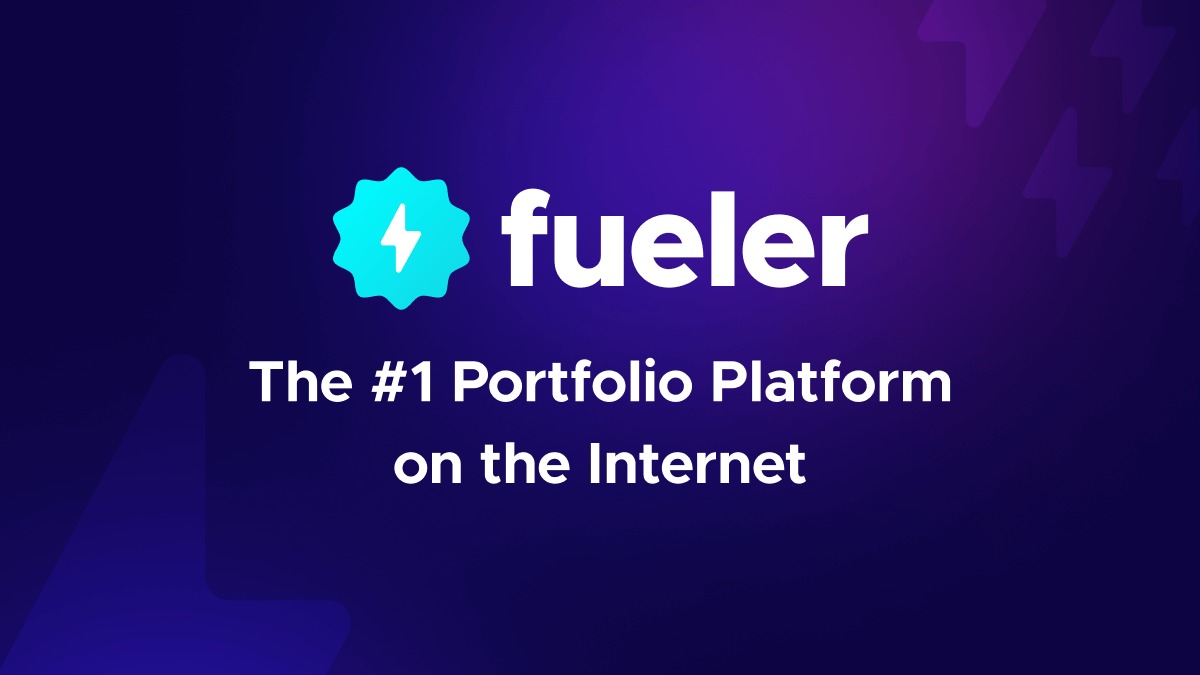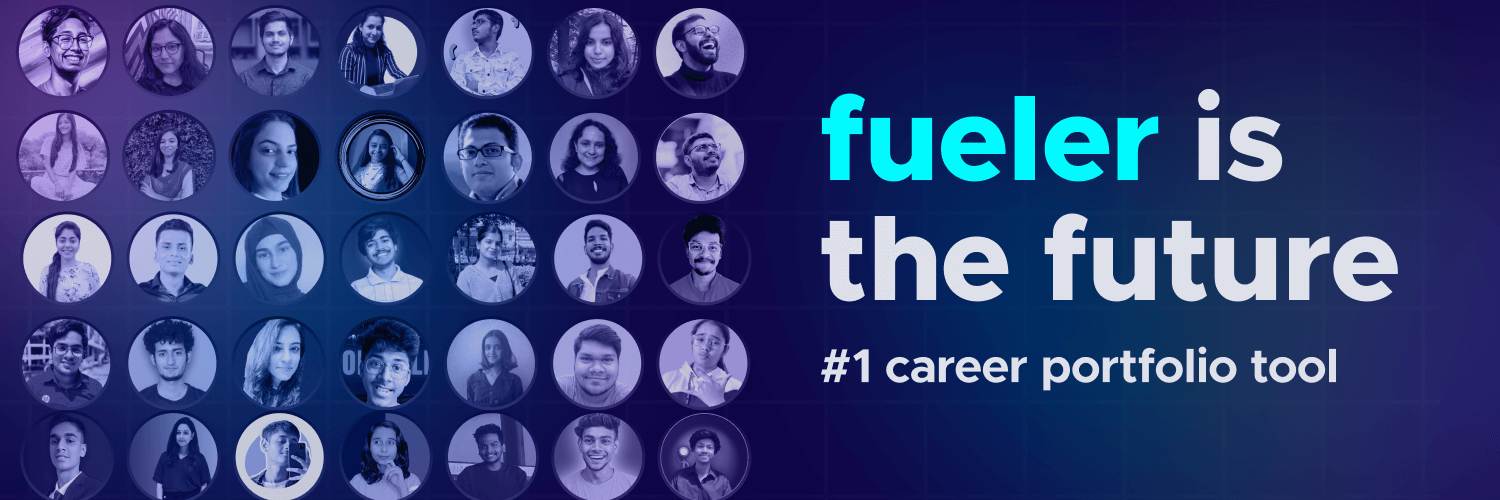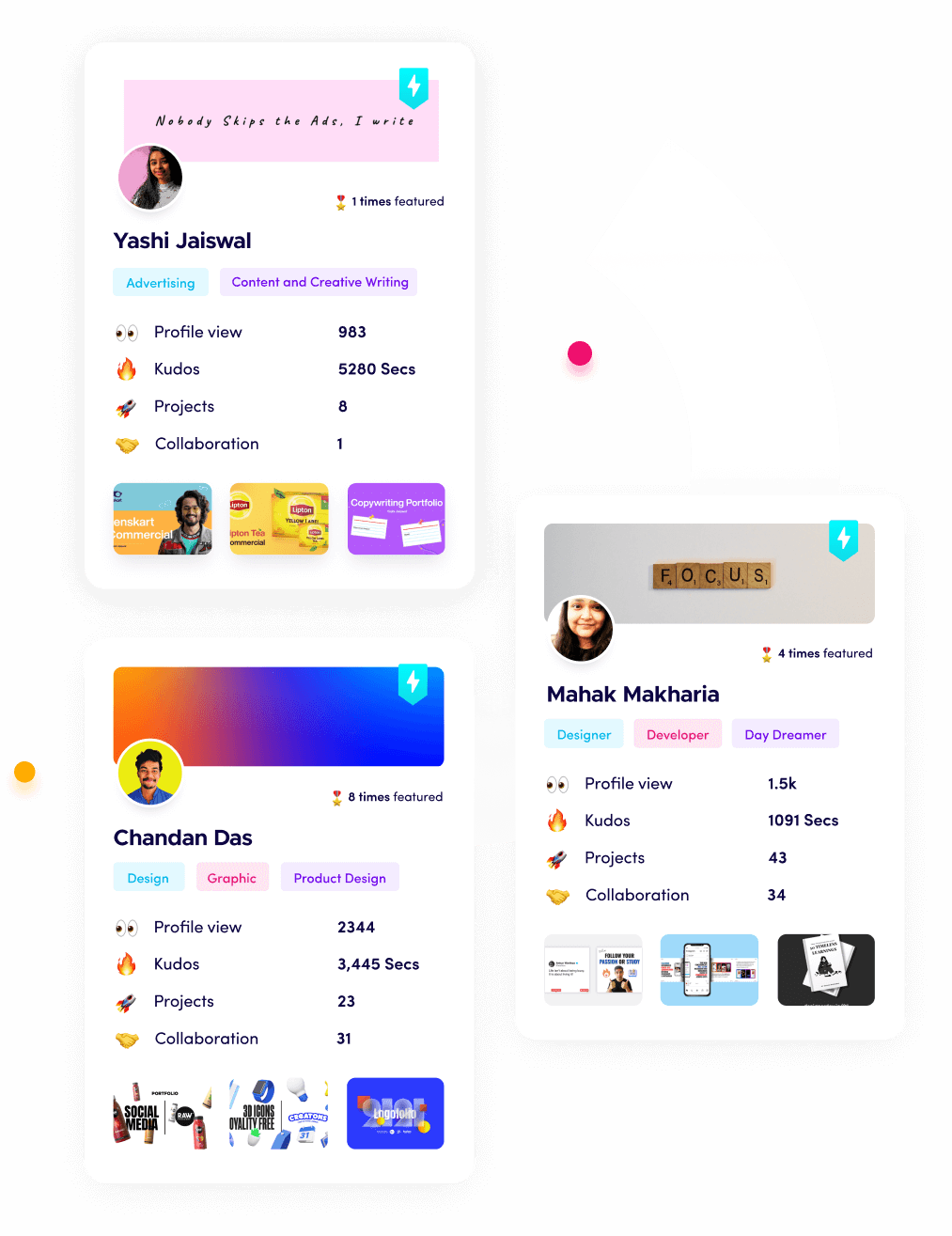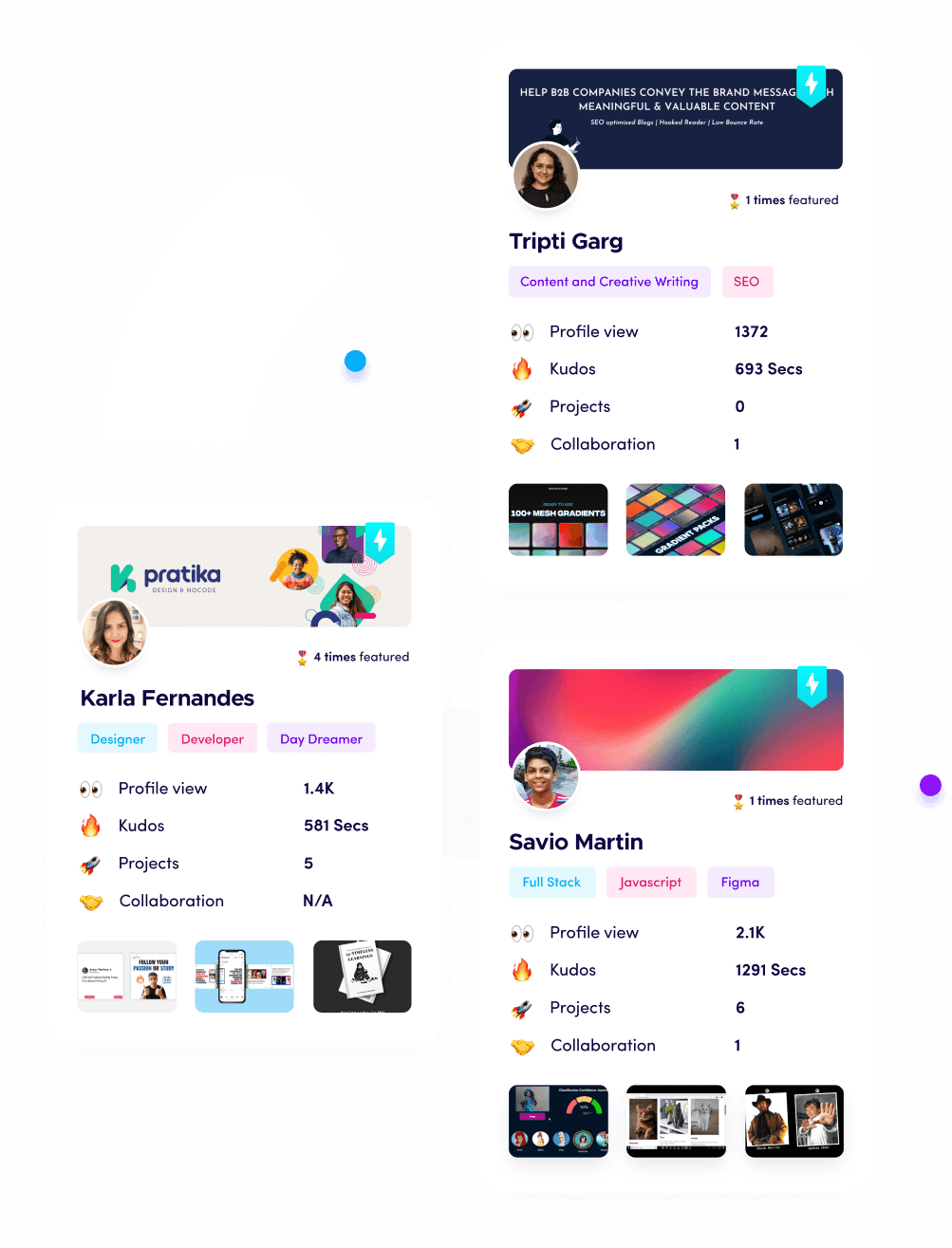How to Start a Career in Video Editing in 2025

Riten Debnath
15 Jun, 2025

Are you fascinated by how YouTube videos, Instagram reels, or blockbuster movies are put together? In 2025, video editing is not just a hobby—it’s a high-demand creative career that can open doors to exciting opportunities in media, entertainment, advertising, and digital marketing. If you want to turn your passion for storytelling and visuals into a real job, now is the best time to start learning and building your path in video editing.
I’m Riten, founder of Fueler, a platform that helps freelancers and professionals get hired through their work samples. In this article, I’ll show you a step-by-step guide to starting a career in video editing in 2025. Remember, mastering editing software is just one part of the journey. Presenting your work in a smart, professional portfolio is what gets you noticed. Your portfolio is your proof of skill, your credibility, and your shortcut to trust.
What Does a Video Editor Do?
A video editor is the creative mind who transforms raw footage into a polished, engaging story. This process involves much more than just cutting and joining clips. Editors are responsible for organizing video and audio files, selecting the best takes, trimming unnecessary parts, and arranging scenes to create a logical flow. They add music, sound effects, voiceovers, titles, transitions, and graphics to make the video more appealing and professional. Editors also adjust color, brightness, and contrast to enhance the visual quality, and may work with directors, producers, or content creators to match the desired mood and message.
- Video editors work on a wide range of projects, such as YouTube videos, films, TV shows, advertisements, and social media content.
- They collaborate closely with directors, clients, and other creative professionals to achieve the best results.
- Editors must be detail-oriented, creative, and able to work under tight deadlines.
- The goal is to create a final product that captures the audience’s attention and communicates the intended story or message.
Essential Skills for Video Editing in 2025
Mastering Editing Software
To become a successful video editor, you must be comfortable with industry-standard editing software. The most popular programs in 2025 include Adobe Premiere Pro, Final Cut Pro, DaVinci Resolve, and beginner-friendly tools like Filmora and iMovie. These programs allow you to cut, arrange, and enhance video clips, add effects, and export your work in various formats. Learning keyboard shortcuts and advanced features can significantly speed up your workflow and set you apart from beginners.
Understanding Storytelling and Pacing
Editing is not just technical—it’s an art. Great editors understand how to build tension, create excitement, and evoke emotions through pacing, transitions, and timing. You need to know how to structure a story, keep viewers engaged, and deliver a clear message. This means knowing when to cut, how to use music and sound, and how to create smooth transitions between scenes.
Color Grading and Correction
Color grading is the process of adjusting colors to create a specific mood or style. It can make your video look cinematic, vibrant, or dramatic. Editors also correct issues like poor lighting or inconsistent color between shots. Mastering color grading tools in your software will help your videos look professional and visually appealing.
Audio Editing and Sound Design
Audio is just as important as visuals. Editors must clean up background noise, balance audio levels, and sync sound effects or music with the video. Using tools like Adobe Audition or Audacity, you can enhance dialogue, add ambiance, and ensure your video sounds as good as it looks.
Motion Graphics and Visual Effects
Adding motion graphics, animated titles, and special effects can make your videos stand out. Learning basic skills in After Effects or similar software lets you create dynamic intros, lower thirds, and visual enhancements that impress clients and viewers. If you’re looking for alternatives, check out these top After Effects alternatives to explore more creative options.
Organization and Time Management
Editors often juggle multiple projects with tight deadlines. Good organization skills help you manage files, keep track of feedback, and deliver work on time. Using project management tools or simple folder systems can make your workflow smoother and less stressful.
Steps to Start Your Video Editing Career
1. Choose Your Learning Path
There are many ways to learn video editing in 2025. You can take online courses from platforms like Coursera, Udemy, or LinkedIn Learning, watch YouTube tutorials, or enroll in a film or media program at a college. Many successful editors are self-taught, using free resources and practicing regularly. Pick the learning style that fits your schedule, budget, and goals.
- Online courses offer structured learning and certificates.
- YouTube tutorials are free and cover everything from basics to advanced tricks.
- Formal education provides networking and hands-on experience.
2. Practice by Editing Real Projects
The best way to learn is by doing. Start by editing your own videos, vlogs, or school projects. Offer to help friends, family, or local businesses with their video content. Volunteer for non-profits or student organizations to gain real-world experience. Each project teaches you new skills and helps you build confidence.
- Practice different styles: vlogs, ads, music videos, documentaries.
- Experiment with footage from free stock video sites if you do not have your own.
- Challenge yourself to edit under time limits to build speed.
3. Build a Strong Video Editing Portfolio
Your portfolio is your most powerful tool for getting hired. Collect your best work and organize it to show a range of skills and styles. For each project, write a short description explaining your role, the challenges you faced, and the results you achieved. Use a platform like Fueler to present your assignments, add context, and make it easy for employers to see your capabilities.
- Include 5–10 diverse projects, such as short films, ads, or social media edits.
- Show before-and-after clips to highlight your impact.
- Keep your portfolio updated as you gain new skills and clients.
4. Network and Build Industry Connections
Video editing is a collaborative field. Join online communities, attend workshops, and connect with other editors, filmmakers, and content creators. Networking can lead to job offers, freelance gigs, and mentorship opportunities. Do not be afraid to ask for feedback or advice from professionals.
- Join Facebook groups, Discord servers, or Reddit communities for editors.
- Attend local film festivals, workshops, or webinars.
- Connect with potential clients on LinkedIn or Instagram.
5. Apply for Jobs or Start Freelancing
Once you have the skills and a solid portfolio, start applying for internships, entry-level jobs, or freelance gigs. Use job boards like Indeed, Monster, and Upwork, or approach local businesses and creators directly. Every project, no matter how small, adds to your experience and reputation.
- Look for assistant editor or junior editor roles.
- Offer your services on freelance platforms and build client relationships.
- Always ask for testimonials and permission to showcase your work.
Career Growth and Salary Expectations
Video editing offers a variety of career paths. You can start as an assistant editor and move up to senior editor, motion graphics artist, or even director. Some editors work full-time for media companies, while others freelance for multiple clients. The average salary for a video editor in the US is around $56,000 per year, but top editors can earn much more, especially with experience and a strong portfolio.
- Entry-level (0–2 years): ₹2.5–4.5 lakh per year (₹20,000–₹37,000/month)
- Mid-level (2–5 years): ₹4.5–8 lakh per year (₹37,000–₹67,000/month)
- Senior/Lead (5+ years): ₹8–15 lakh per year (₹67,000–₹1.25 lakh/month)
- Freelancers: ₹500–₹5,000 per hour or ₹3,000–₹50,000+ per project, with monthly earnings from ₹50,000 up to ₹2 lakh or more for top professionals
These numbers are based on current job listings, industry surveys, and real freelance rates in India. Building a strong portfolio, learning new tools, and networking can help you reach the higher end of these ranges.
Final Thought
Starting a career in video editing in 2025 is exciting and full of potential. With the right skills, a strong portfolio, and a willingness to keep learning, you can turn your passion for video into a rewarding profession. Focus on real-world projects, build connections, and always present your best work. Your journey is unique—embrace it and keep growing.
FAQs: How to Start a Career in Video Editing
1. What is the best software to learn for video editing in 2025?
Adobe Premiere Pro, Final Cut Pro, and DaVinci Resolve are industry standards. Beginners can also start with Filmora or iMovie.
2. Do I need a degree to become a video editor?
No, many editors are self-taught or learn through online courses. Your portfolio and skills matter most.
3. How do I build a video editing portfolio?
Edit your own videos, help friends or local businesses, and collect your best work. Use platforms like Fueler to organize and share your projects.
4. Can I work as a freelance video editor?
Yes, many editors freelance for YouTubers, brands, and agencies. Freelancing gives you flexibility and a wide range of projects.
5. Is video editing a stable career?
Yes, demand for video content is growing rapidly. Skilled editors are needed for social media, advertising, film, and more.
What is Fueler Portfolio?
Fueler is a career portfolio platform that helps companies find the best talents for their organization based on their proof of work.
You can create your portfolio on Fueler, thousands of freelancers around the world use Fueler to create their professional-looking portfolios and become financially independent. Discover inspiration for your portfolio
Sign up for free on Fueler or get in touch to learn more.


